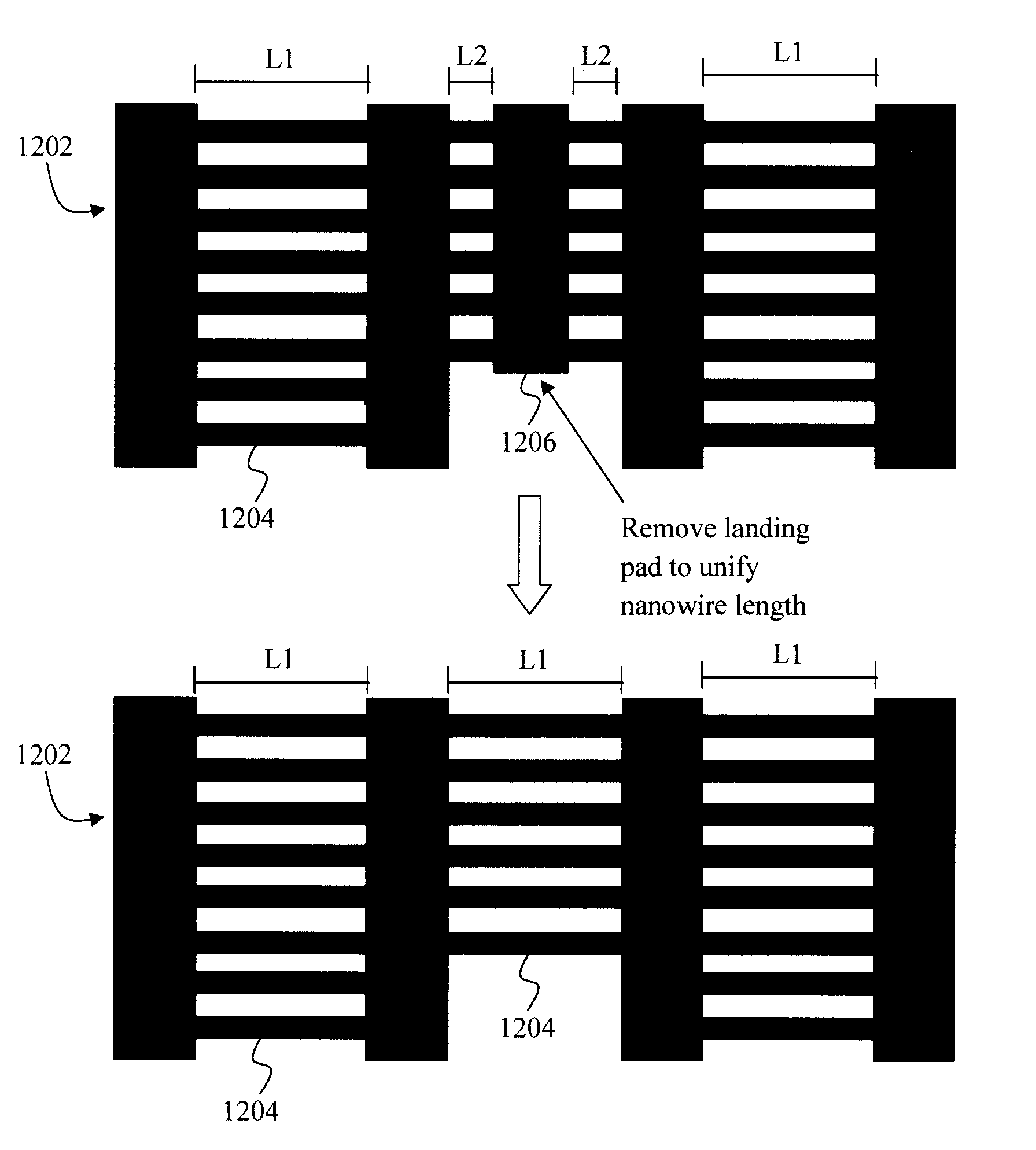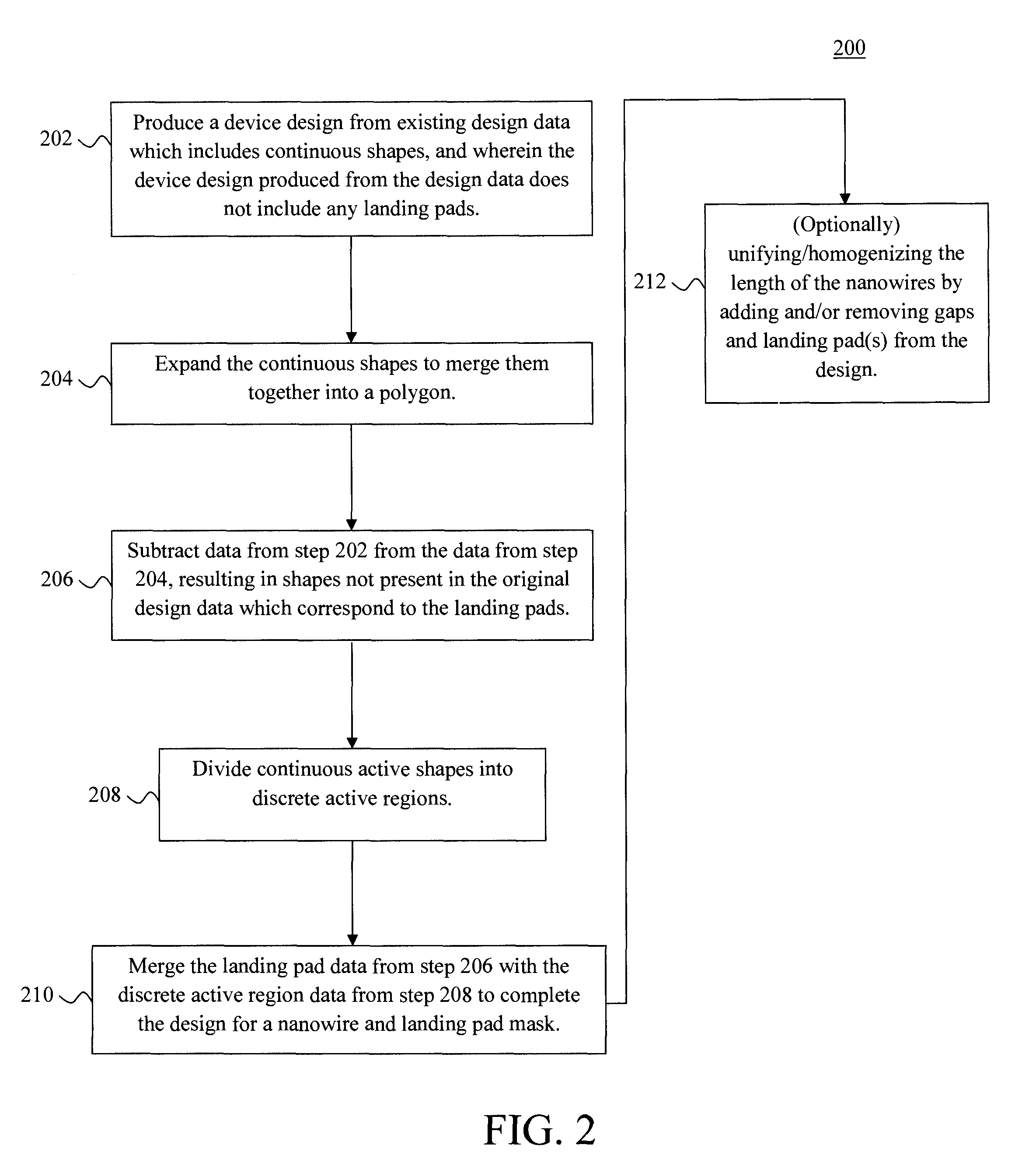Techniques for Generating Nanowire Pad Data from Pre-Existing Design Data
- Summary
- Abstract
- Description
- Claims
- Application Information
AI Technical Summary
Benefits of technology
Problems solved by technology
Method used
Image
Examples
Embodiment Construction
[0024]As highlighted above, electronic device designs employing freely suspended wires also need landing pads to tether or anchor the wires. One implementation of a nanowire / landing pad design employs a ladder-like configuration wherein both the nanowires and pads are patterned in an active layer of a wafer wherein the nanowires, like the rungs of a ladder, have the pads attached at opposite ends thereof. See, for example, FIG. 8 (described below) which depicts such a ladder-like nanowire and pad configuration.
[0025]In implementations involving silicon-on-insulator (SOI) wafers, an SOI layer is the active layer in which the nanowires and pads are patterned. In an SOI wafer, the SOI layer is typically separated from a supporting substrate by a buried oxide (or BOX). To form the device, a hardmask is patterned on the SOI layer with the footprint and location of the nanowires and landing pads. The shape of the patterned hardmask is then transferred to the SOI layer (e.g., using a suita...
PUM
 Login to View More
Login to View More Abstract
Description
Claims
Application Information
 Login to View More
Login to View More - R&D
- Intellectual Property
- Life Sciences
- Materials
- Tech Scout
- Unparalleled Data Quality
- Higher Quality Content
- 60% Fewer Hallucinations
Browse by: Latest US Patents, China's latest patents, Technical Efficacy Thesaurus, Application Domain, Technology Topic, Popular Technical Reports.
© 2025 PatSnap. All rights reserved.Legal|Privacy policy|Modern Slavery Act Transparency Statement|Sitemap|About US| Contact US: help@patsnap.com



